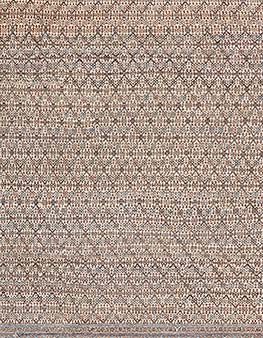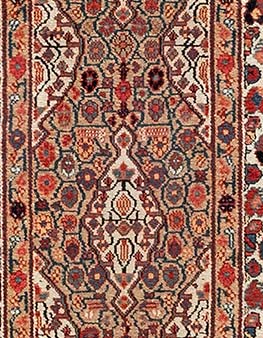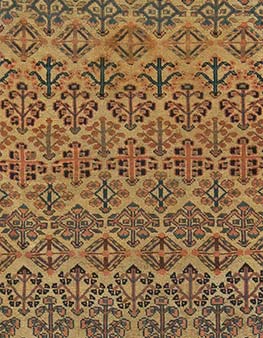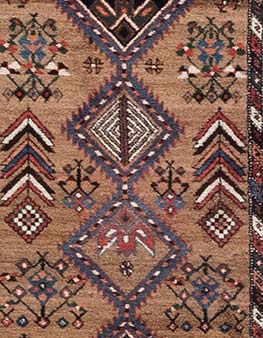History of Hamadan Rugs
 Hamadan is an ancient city in the area formerly known as Persia and now Iran. The history of the city may even be traced to the Biblical story of Esther. Today, Hamadan is a large city west of Tehran, Iran’s capital. Antique Hamadan rugs come from the area around this city. As with most rug production, the name of the rug generally refers to the city of sale rather than the city of production. The Hamadan region actually consists of over one thousand villages. Many of these villages welcomed refugees and served as homes for different ethnicities and religious variations. This diversity promoted the creation of tapestries that reflected the same level of diversity. Hamadan rugs feature different designs, but they all enjoy excellent quality and value.
Hamadan is an ancient city in the area formerly known as Persia and now Iran. The history of the city may even be traced to the Biblical story of Esther. Today, Hamadan is a large city west of Tehran, Iran’s capital. Antique Hamadan rugs come from the area around this city. As with most rug production, the name of the rug generally refers to the city of sale rather than the city of production. The Hamadan region actually consists of over one thousand villages. Many of these villages welcomed refugees and served as homes for different ethnicities and religious variations. This diversity promoted the creation of tapestries that reflected the same level of diversity. Hamadan rugs feature different designs, but they all enjoy excellent quality and value.
Material and Strucure of Hamadan Rugs
 Antique Hamadan rugs were created with thick wool with coarse weaving. One cotton weft served the entire rug. Overall, the construction results in a rug that may be rough in texture, but high in quality. The coloring of these rugs includes deep blue, deep red, off-white, and soft neutral tones. The colors consist of natural vegetable dyes. Most of the designs in antique Hamadan rugs are geometric, mostly angular however, some rugs feature curvilinear designs and arabesques. Another interesting aspect that may indicate the cultural influence of refugees includes the knotting used in the weaving. Turkish knots, which are symmetrical, are used in antique Hamdan rugs. Even though created in Persia, Turkish ethnic groups are part of the weavers who created the rugs.
Antique Hamadan rugs were created with thick wool with coarse weaving. One cotton weft served the entire rug. Overall, the construction results in a rug that may be rough in texture, but high in quality. The coloring of these rugs includes deep blue, deep red, off-white, and soft neutral tones. The colors consist of natural vegetable dyes. Most of the designs in antique Hamadan rugs are geometric, mostly angular however, some rugs feature curvilinear designs and arabesques. Another interesting aspect that may indicate the cultural influence of refugees includes the knotting used in the weaving. Turkish knots, which are symmetrical, are used in antique Hamdan rugs. Even though created in Persia, Turkish ethnic groups are part of the weavers who created the rugs.
Antique Hamadan rugs reflect, with their design and construction, the diversity of ethnic groups within the region over time. These rugs are some of the oldest articles of Persian tapestry, as well as some of the most beautiful and durable. Their designs stand the test of time in terms of brilliance and strength.









